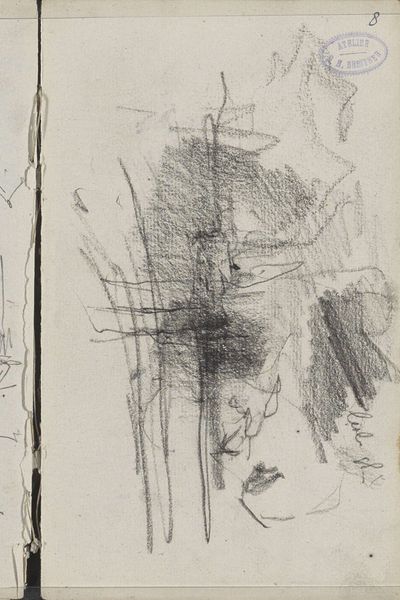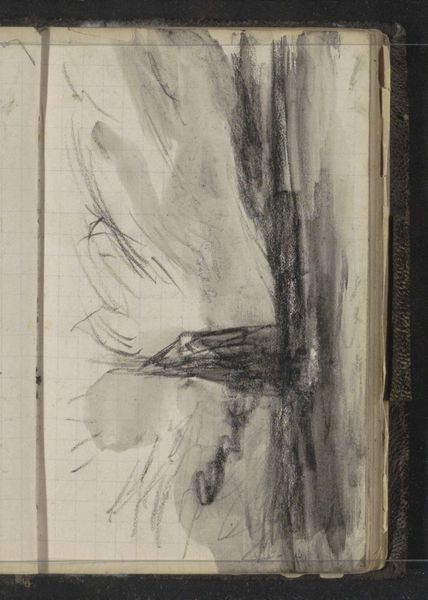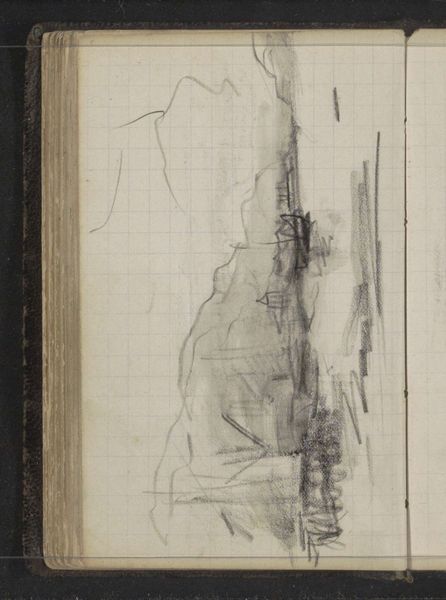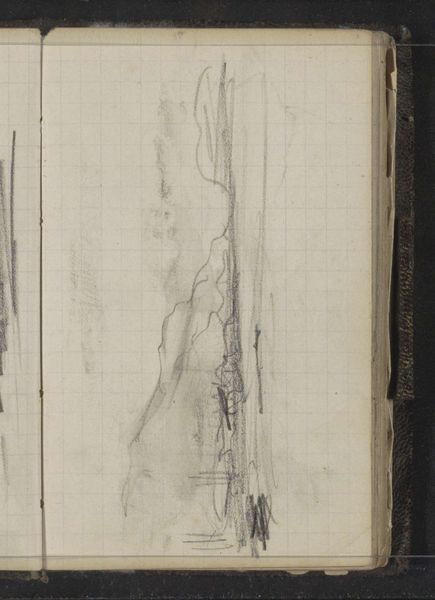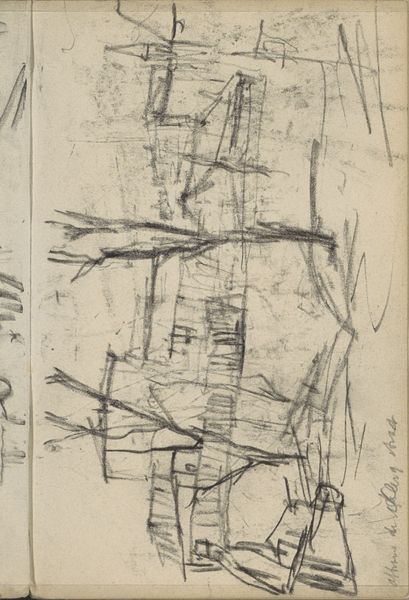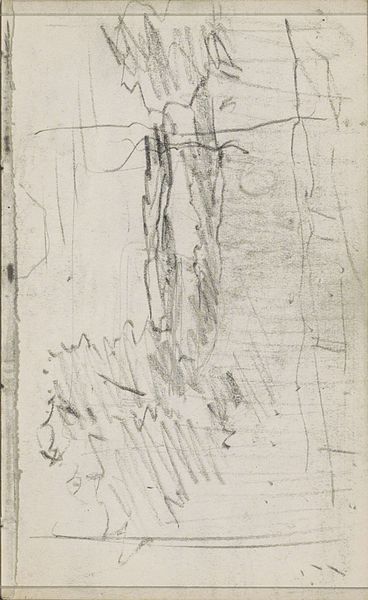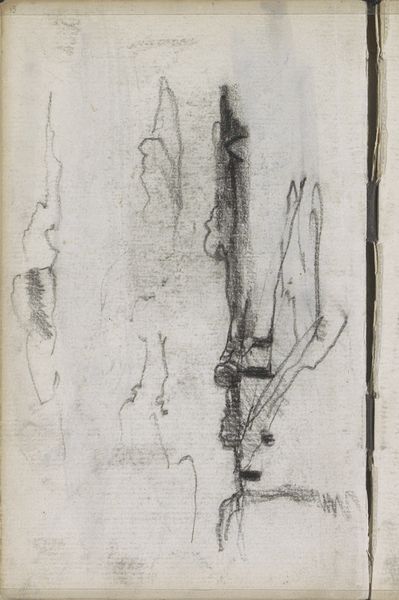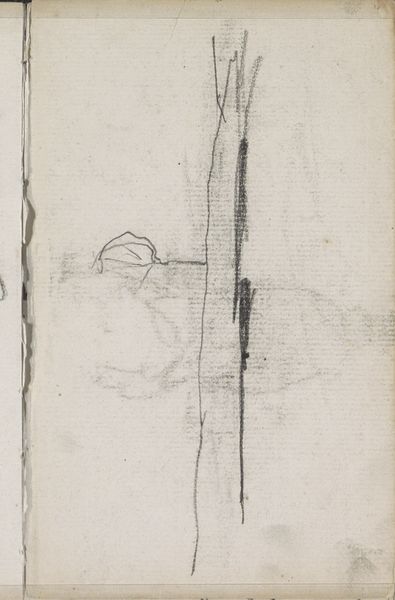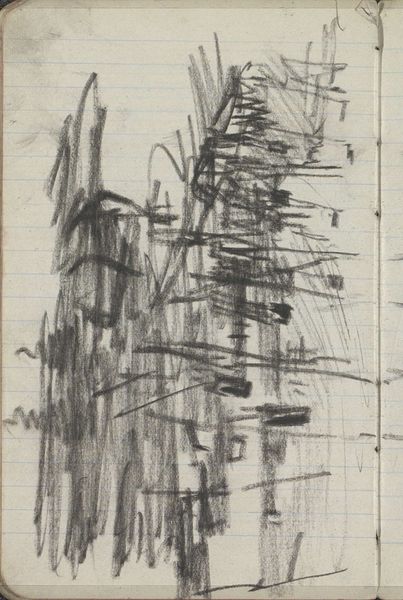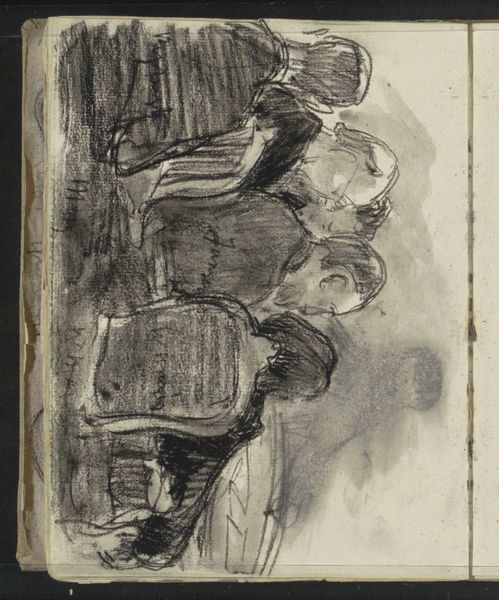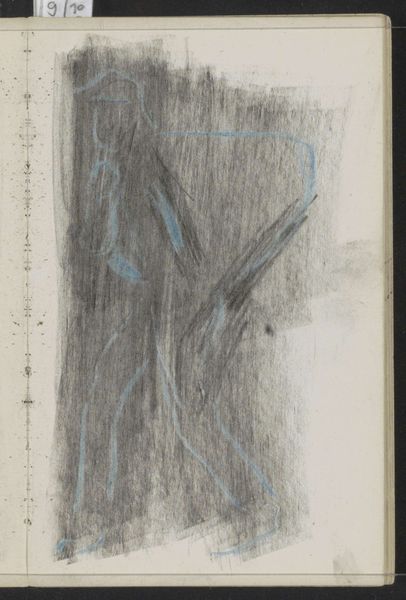
drawing, paper, graphite
#
drawing
#
sketch book
#
landscape
#
paper
#
graphite
#
realism
Copyright: Rijks Museum: Open Domain
Curator: Here we have “Bemanning op een schip bij Malye Karmakuly (Nova Zembla),” a graphite drawing on paper created by Louis Apol sometime between 1880 and 1888. Editor: It feels unfinished, raw. Look at those hurried strokes – like a storm captured in graphite. I imagine the artist shivering as he made this, struggling against the wind. Curator: Absolutely. Consider the materiality – graphite on paper. It’s immediate, accessible, a medium perfectly suited to documenting the fleeting moments and harsh realities of Arctic exploration. Apol, known for his depictions of winter landscapes, clearly prioritizes conveying a sense of place and labor. Editor: And the labor must have been immense! Nova Zembla, in that period, represented the edge of the known world. Men faced isolation, scarcity, and the brutal force of nature, with devastating outcomes in many instances. What does it mean to capture this experience of labor under extreme duress? Curator: That's the power of Apol's drawing. It speaks volumes about the human capacity to endure – the raw physical work, rendered with such sparse, but considered marks. The sketch captures not just the scene, but the sheer physicality involved. Editor: The rapid marks mirror not just weather, but also gesture—perhaps even panic. And there’s something about the book form too. This wasn’t a polished product made for public display, it’s a sketch pulled straight from someone’s experience; a field report that shows that resource extraction often demands resourcefulness and resistance. Curator: Right! The format underscores the work as something made "in the field" versus fabricated later. How it underscores both precarity and improvisation of life. The physical properties tell that story— the quick sketches as immediate response to lived conditions, of survival against exploitation of northern spaces. Editor: That makes it all the more poignant for me, thinking about contemporary concerns around climate change and the ongoing exploitation of resources in the Arctic. Curator: The social contexts of the making of this image, especially where landscape is viewed as material to be taken from the earth, resonates as a vital lens. The image may be 'unfinished' but the conversation and historical perspective remain deeply relevant. Editor: Indeed. The ghosts of resource extraction haunt this work and provide perspective for today’s social urgencies.
Comments
No comments
Be the first to comment and join the conversation on the ultimate creative platform.
